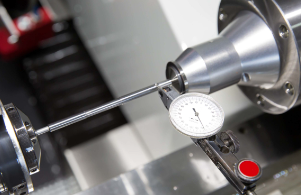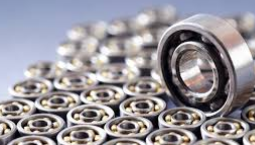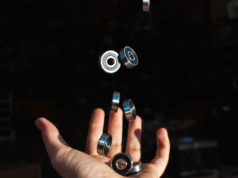Choosing the Right Bearing Precision Class for Your Machinery
Learn how to select the perfect bearing precision class for your machinery with our comprehensive guide.
Find out the key factors that determine the right precision class and how it impacts the performance and longevity of your machinery.
Make informed decisions and avoid costly mistakes by reading our expert advice now.
If you are looking to optimize the performance and durability of your machinery, selecting the appropriate bearing precision class is a crucial decision.
The right bearing precision class ensures that your machinery operates smoothly, reduces wear and tear, and improves overall efficiency.
In this guide, we will explore the key factors to consider when choosing the perfect bearing precision class for your machinery, so you can make an informed decision and avoid costly mistakes.
Selecting the right bearing precision class for machinery involves considering a range of factors that can impact its performance and longevity.
Here are some key factors to keep in mind:
1.Load and speed requirements: Determine the load and speed requirements of your machinery to ensure that the bearing can handle the required loads and speed without causing excessive wear or overheating.
2.Environment: Consider the operating environment, including temperature, humidity, and contaminants.
Choose a precision class that can withstand the conditions it will be exposed to.
3.Tolerance and clearance: Determine the required levels of tolerance and clearance for your machinery, as these factors can impact the precision class needed.
4.Lubrication: Choose a precision class that can operate with the appropriate lubrication to reduce wear and improve efficiency.
5.Application: Consider the specific application of your machinery, including the type of load, direction of force, and required accuracy.
This can help determine the appropriate precision class for your needs.
By taking these factors into consideration, you can select the right bearing precision class for your machinery, ensuring optimal performance and longevity.
It's always best to consult with an expert or the bearing manufacturer to ensure that you make the best choice for your specific application.
Choosing the right bearing precision class is a critical decision for ensuring the optimal performance and longevity of your machinery.
In the following sections, we will explore these considerations in more detail, providing you with a comprehensive guide to choosing the perfect bearing precision class for your machinery.
Definition of Bearing Precision Class

Bearing precision class refers to the level of accuracy and consistency in the manufacturing of a bearing.
It is determined by the tolerances and clearances of the bearing components, such as the inner and outer rings, balls, and cages.
The higher the precision class, the tighter the tolerances and clearances, resulting in a more precise and consistent bearing.
The precision class of a bearing is designated by a numerical code,
such as ABEC (Annular Bearing Engineering Committee) or ISO (International Organization for Standardization), with higher numbers indicating higher precision.
Choosing the appropriate bearing precision class is essential for ensuring the optimal performance and longevity of machinery.
Types of Bearing Precision Classes

ABEC (Annular Bearing Engineering Committee) Classification System and ISO (International Organization for Standardization) Classification System
The ABEC (Annular Bearing Engineering Committee) and ISO (International Organization for Standardization) Classification Systems are two commonly used systems for specifying bearing precision classes.
The ABEC system is widely used in the United States and consists of five levels of precision, with ABEC 1 being the lowest and ABEC 5 being the highest.
The ABEC rating is determined by measuring the tolerances of the bearing components, such as the inner and outer rings, balls, and cages, and comparing them to a set of standardized values.
The higher the ABEC rating, the tighter the tolerances and the more precise and consistent the bearing will be.
However, it's important to note that the ABEC rating only applies to bearings with an outside diameter of up to 8 inches.
On the other hand, the ISO system is used globally and consists of six levels of precision, with ISO P0 being the lowest and ISO P6 being the highest.
The ISO rating is determined by measuring the dimensional and running accuracy of the bearing components, including the inner and outer rings, balls, and cages.
The higher the ISO rating, the tighter the tolerances and the more precise and consistent the bearing will be.
The ISO system is more comprehensive than the ABEC system, as it includes bearings with an outside diameter of up to 5 meters.
It's important to note that while both systems are used to specify the precision of bearings, they are not interchangeable.
This means that an ABEC 5 bearing may not necessarily have the same precision as an ISO P5 bearing,
as the methods of measurement and the values used in each system are different.
It's essential to choose the appropriate classification system based on the application and requirements of the machinery.
ABEC Classification System
The ABEC (Annular Bearing Engineering Committee) Classification System is a widely used system for specifying bearing precision classes in the United States.
The ABEC system consists of five levels of precision: ABEC 1, ABEC 3, ABEC 5, ABEC 7, and ABEC 9.
1.ABEC 1: This is the lowest level of precision and is suitable for applications with low speed and low precision requirements.
ABEC 1 bearings have looser tolerances and clearances, which can result in more noise and vibration, as well as lower durability.
2.ABEC 3: This level of precision is suitable for applications with moderate speed and precision requirements.
ABEC 3 bearings have tighter tolerances and clearances than ABEC 1 bearings, resulting in less noise and vibration and greater durability.
3.ABEC 5: This level of precision is suitable for applications with high speed and precision requirements.
ABEC 5 bearings have even tighter tolerances and clearances than ABEC 3 bearings, resulting in even less noise and vibration and greater durability.
4.ABEC 7: This level of precision is suitable for applications with very high speed and precision requirements.
ABEC 7 bearings have tighter tolerances and clearances than ABEC 5 bearings, resulting in even less noise and vibration and greater durability.
5.ABEC 9: This is the highest level of precision and is suitable for applications with extremely high speed and precision requirements.
ABEC 9 bearings have the tightest tolerances and clearances, resulting in the least noise and vibration and the highest durability.
It's important to note that the ABEC rating only applies to bearings with an outside diameter of up to 8 inches and does not take into account other factors,
such as material quality, lubrication, and application-specific requirements.
Therefore, it's important to consider these factors in addition to the ABEC rating when selecting the appropriate bearing for your machinery.
Differences between ABEC Classes
The ABEC system consists of five levels of precision: ABEC 1, ABEC 3, ABEC 5, ABEC 7, and ABEC 9.
Here are the key differences between ABEC classes:
1.Tolerances: ABEC classes differ in the tolerances of the bearing components, such as the inner and outer rings, balls, and cages.
As the ABEC class increases, the tolerances become tighter, resulting in a more precise and consistent bearing.
2.Clearance: ABEC classes also differ in the amount of internal clearance in the bearing.
As the ABEC class increases, the clearance decreases, resulting in less movement between the bearing components and greater precision.
3.Speed: ABEC classes also differ in their ability to handle high speeds.
As the ABEC class increases, the bearing can handle higher speeds without generating excessive heat, noise, or vibration.
4.Durability: ABEC classes also differ in their durability.
Bearings with higher ABEC ratings are generally more durable and have a longer lifespan than those with lower ratings.
5.Cost: ABEC classes also differ in cost.
Bearings with higher ABEC ratings are generally more expensive than those with lower ratings due to the tighter tolerances and greater precision required in their manufacturing.
It's important to note that while higher ABEC classes generally indicate higher precision and performance,
they may not always be necessary or suitable for every application.
Other factors such as load and speed requirements, environment, lubrication,
and application-specific requirements should also be considered when selecting the appropriate bearing for your machinery.
Applications of ABEC Classes

Here are some common applications for each ABEC class:
1.ABEC 1: This is the lowest level of precision and is suitable for applications with low speed and low precision requirements,
such as electric motors, conveyor systems, and simple machines.
2.ABEC 3: This level of precision is suitable for applications with moderate speed and precision requirements,
such as automotive applications, household appliances, and low-speed machinery.
3.ABEC 5: This level of precision is suitable for applications with high speed and precision requirements,
such as machine tools, robotics, and high-speed machinery.
4.ABEC 7: This level of precision is suitable for applications with very high speed and precision requirements,
such as aerospace applications, medical equipment, and high-performance machinery.
5.ABEC 9: This is the highest level of precision and is suitable for applications with extremely high speed and precision requirements,
such as precision optics, semiconductor manufacturing, and advanced robotics.
ISO Classification System
The ISO (International Organization for Standardization) Classification System is a widely used system for specifying the precision of bearings globally.
The ISO system consists of six levels of precision: P0, P6, P5, P4, P2, and P3. Here are the key differences between ISO classes:
1.Tolerances: ISO classes differ in the tolerances of the bearing components, such as the inner and outer rings, balls, and cages.
As the ISO class increases, the tolerances become tighter, resulting in a more precise and consistent bearing.
2.Clearance: ISO classes also differ in the amount of internal clearance in the bearing. As the ISO class increases, the clearance decreases,
resulting in less movement between the bearing components and greater precision.
3.Speed: ISO classes also differ in their ability to handle high speeds. As the ISO class increases,
the bearing can handle higher speeds without generating excessive heat, noise, or vibration.
4.Durability: ISO classes also differ in their durability. Bearings with higher ISO ratings are generally more durable and have a longer lifespan than those with lower ratings.
5.Cost: ISO classes also differ in cost. Bearings with higher ISO ratings are generally more expensive than those with lower ratings due to the tighter tolerances and greater precision required in their manufacturing.
Applications of ISO Classes
Here are some common applications for each ISO class:
1.P0: This is the lowest level of precision and is suitable for applications with low speed and low precision requirements,
such as electric motors, conveyor systems, and simple machines.
2.P6: This level of precision is suitable for applications with moderate speed and precision requirements,
such as automotive applications, household appliances, and low-speed machinery.
3.P5: This level of precision is suitable for applications with high speed and precision requirements,
such as machine tools, robotics, and high-speed machinery.
4.P4: This level of precision is suitable for applications with very high speed and precision requirements,
such as aerospace applications, medical equipment, and high-performance machinery.
5.P2: This is the highest level of precision and is suitable for applications with extremely high speed and precision requirements,
such as precision optics, semiconductor manufacturing, and advanced robotics.
It's important to note that while higher ISO classes generally indicate higher precision and performance,
they may not always be necessary or suitable for every application.
Other factors such as load and speed requirements, environment, lubrication,
and application-specific requirements should also be considered when selecting the appropriate bearing for your machinery.
Factors Affecting Bearing Precision Class
There are several factors that can affect the choice of bearing precision class for machinery.
Here are some of the key factors:
1.Load: The type and magnitude of the load that the bearing will be subjected to is an important factor in determining the appropriate precision class.
Higher precision bearings are typically needed for higher loads.
2.Speed: The rotational speed of the bearing is another important factor in determining the appropriate precision class.
Higher-speed applications require higher precision bearings to ensure stability and reduce wear and tear.
3.Environment: The environment in which the machinery operates, including temperature,
humidity, and exposure to contaminants, can also affect the choice of bearing precision class.
4.Tolerance and clearance: The tolerance and clearance requirements of the machinery will also determine the appropriate precision class.
Tighter tolerances and clearances will require higher precision bearings.
5.Lubrication: The type and quality of lubrication used in the machinery can affect the precision class of the bearing,
as inadequate lubrication can result in increased wear and tear.
6.Application: The specific application of the machinery, such as aerospace, automotive, or medical equipment, can also affect the choice of bearing precision class.
Different applications have different precision requirements and may require different precision classes.
It's important to consider all of these factors when selecting the appropriate bearing precision class for your machinery.
Choosing the right precision class can help ensure optimal performance and longevity of your machinery, while also minimizing maintenance costs and downtime.
Benefits of Using High Precision Bearings
Using high-precision bearings in machinery can provide several benefits, including:
1.Increased reliability and durability: High-precision bearings are designed to operate at high speeds and handle heavy loads,
which can increase the reliability and durability of the machinery.
They are also manufactured with tighter tolerances and with better materials, which can reduce wear and tear and increase the lifespan of the bearings.
2.Improved performance and efficiency: High-precision bearings can improve the performance and efficiency of the machinery by reducing friction, heat generation, and noise.
This can result in smoother operation, higher speed, and greater accuracy, which can be particularly important for precision machinery.
3.Cost savings in the long run: Although high-precision bearings may be more expensive initially, they can provide cost savings in the long run by reducing maintenance and replacement costs.
They are less likely to fail or require repairs, which can reduce downtime and associated costs.
Overall, using high-precision bearings can help to optimize the performance and longevity of machinery, while also minimizing maintenance costs and downtime.
It's important to select the appropriate precision class based on the specific requirements of the machinery,
as using bearings that are too high or too low in precision can result in suboptimal performance and increased wear and tear.
Conclusion
In conclusion, choosing the right bearing precision class for your machinery is critical to ensuring optimal performance, reliability, and longevity.
The ABEC and ISO classification systems provide a useful guide for selecting the appropriate precision class based on load,
speed, environment, tolerance, clearance, lubrication, and application-specific requirements.
It's important to carefully consider all of these factors when selecting the appropriate bearing precision class for your machinery and to consult with a qualified bearing supplier or engineer if necessary.





